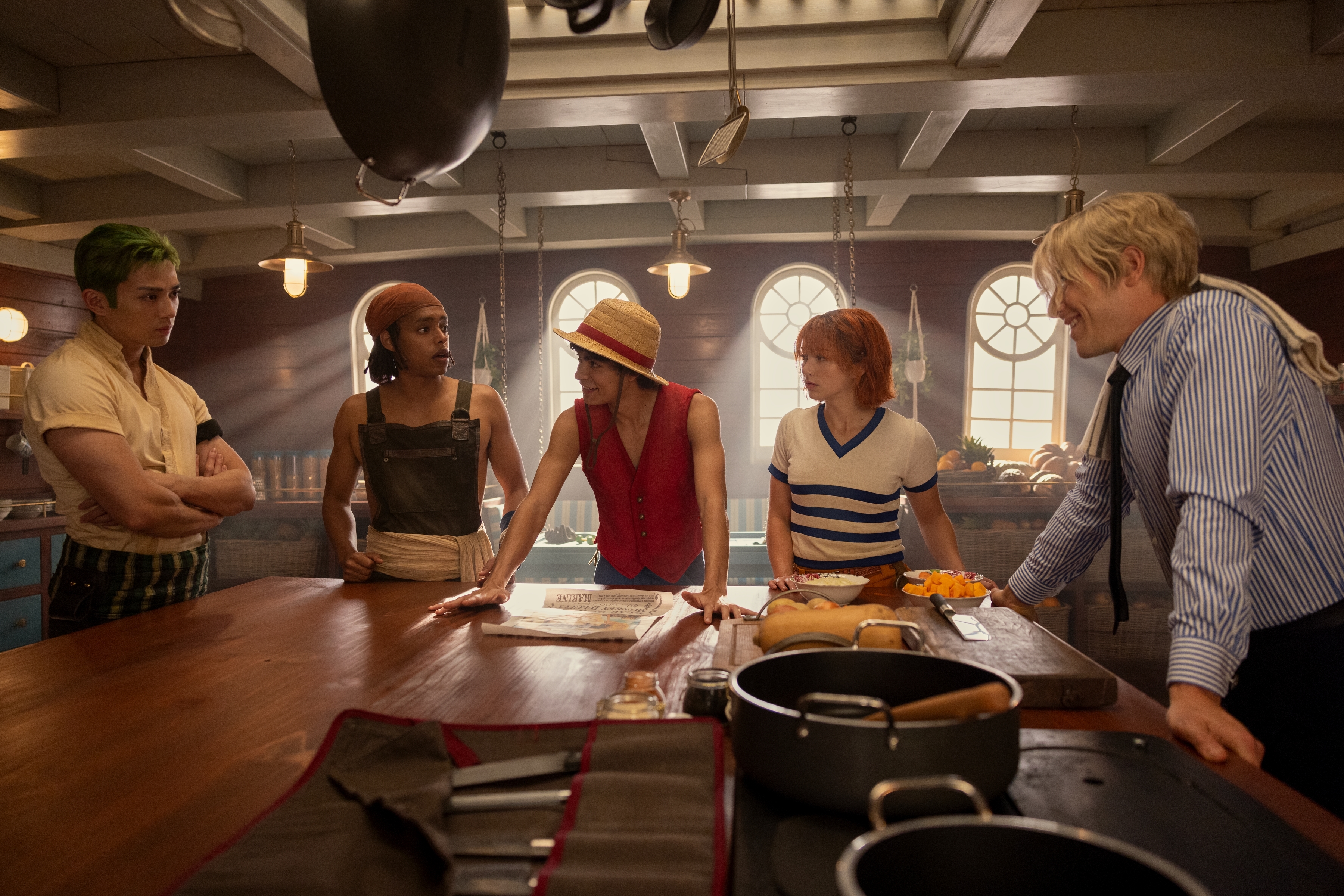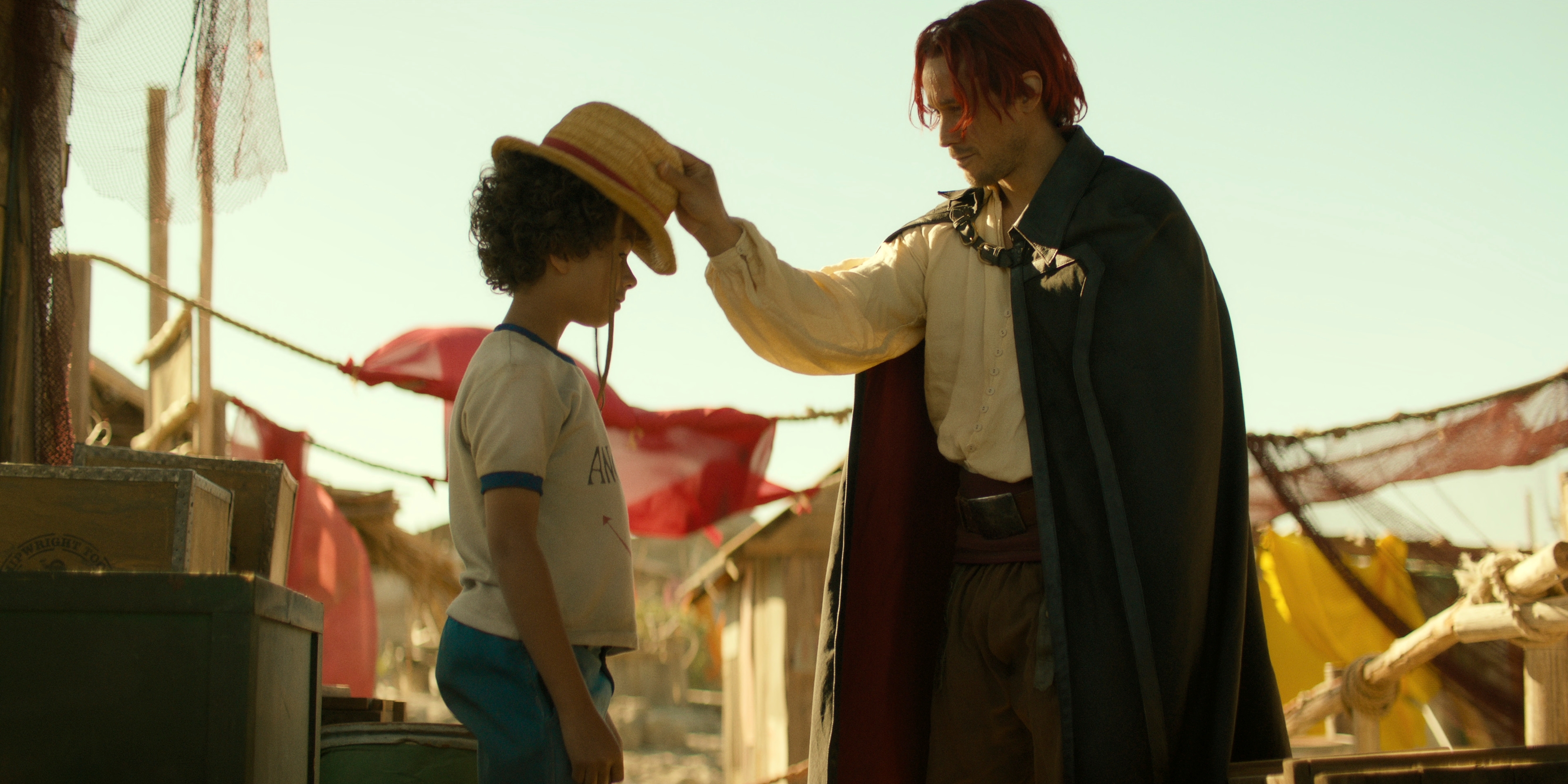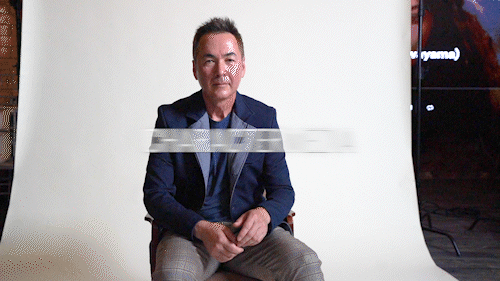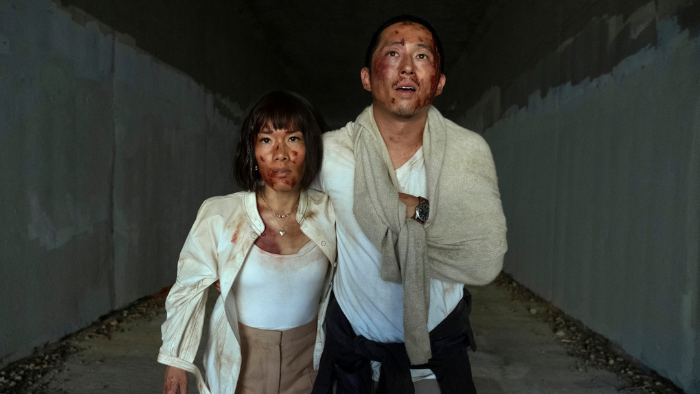When Netflix’s “One Piece” live-action remake was announced, it was met with wariness. And why wouldn’t it be? The track record of the successful anime-to-live-action pipeline is bleak. “Death Note” (2017) was whitewashed and faithless to the original, and “Cowboy Bebop” (2021) was criticized by the original anime director, Shinichirō Watanabe, who felt the whole production was generally off-putting (“It was clearly not ‘Cowboy Bebop,’” he said in an interview with Forbes). Considering “One Piece,” the long-standing 1,000-plus episode anime based on the manga by Eiichiro Oda, there was no room for an adaptation of the same missteps.
As a producer for hit series like ABC’s “Lost” and “CSI: Miami” and showrunner for shows like “Pan Am” (2011) and “Helix” (2014), Steven Maeda was more than up for the challenge. And the proof speaks for itself, seeing as “One Piece” is currently being lauded as one of the most successful live-action anime adaptations ever. It’s certified fresh on Rotten Tomatoes and has garnered praise from critics and fans alike.
Character Media sat down with Maeda ahead of the show’s second-season renewal to discuss just how they dodged the curse that befell so many others.
CM: Translating a manga to live-action is often difficult because fans can be so passionate and vocal. How did you go about adapting “One Piece” while keeping fans of the original in mind?
SM: A huge part was making sure fans were pleased and [that] they were having a similar experience to reading the manga or watching the anime. That was key — trying to make sure if [we made] a change, it was something that reflected the spirit of the original material.
Oda-san, [“One Piece”’s original creator], was very instrumental in putting his seal of approval on everything. It’s his sandbox, and we were invited to play in it.
CM: There are over a thousand episodes in the anime. How did you choose what to condense knowing you only had eight episodes?
SM: It seemed like a no-brainer to take the East Blue arc because it’s got a nice endpoint with them getting to the Grand Line. It also enabled us to introduce Luffy and his first four crew members and tell their backstories.

CM: Having the flashbacks throughout the eight episodes was smart. You’re slowly but surely building your relationship with the characters as an audience member.
SM: Absolutely, and that was something that was definitely a little callback to my time on “Lost.” Those flashbacks worked so well for that show, and for [“One Piece”] I was like, “You know what? We have great emotional flashbacks here. Let’s use them as a way to punctuate who the character is.”
CM: I liked how you didn’t have one sole episode dedicated to backstory and instead it was spread throughout the eight; it flows really well.
SM: It was challenging. For example, in the Luffy flashback that’s in episodes one and two, there was lots of time spent figuring out where those flashbacks went. Initially, there was a version where the flashbacks started the first half of the pilot, which felt like too much; then there was a version where we did flashbacks in the second episode, which felt too late. Finally, we divvied them up between one and two because Luffy’s flashback is so instrumental to who he is.

CM: Right. Speaking of Luffy, the show has been praised for finding such fitting actors for each role. What was the casting process like?
SM: It was drawn out. I got great casting directors, Junie Lowry and Libby Goldstein, who scoured the earth for us. They looked all over, [not only] trying to find people for an English language adaptation, but also people who fit the roles and had good chemistry together.
Finding Iñaki [Godoy] was the gem. When we first saw him, it was like, “Oh my God. Wait, go back.” We were trying to figure out who Luffy was because a character with that much optimism and sense of hope could be really grating and make you feel like he’s a con man trying to sell you something. We did see a lot of tapes where people didn’t quite have it right. I honestly don’t know who we would have cast as backup. We would have been screwed.

CM: Has the response to the live-action surprised you at all? I mean, people are very excited!
SM: Yeah, I’m pleasantly surprised by it. There’s been such an outpouring of both fans and non-fans loving the show, and that has been so tremendously rewarding because that was the goal early on. [There] was an attempt to plant as many Easter eggs within the first season as we could, but we also wanted to make sure that it was accessible to people who had never heard of “One Piece” before.
CM: What are you looking most forward to tackling if you’re picked up for a second season?
SM: You know what? I’ve dedicated myself to not talking about season two because it’s under a veil of secrecy. I definitely just want to celebrate this first season because it took four years of labor and love.

CM: Hypothetically though, Chopper the reindeer. If you were to create that character, would you use prosthetics? CGI?
SM: All I have to say about Chopper is that he’s my favorite character in the show.
CM: That’s a perfect answer. My last question is: Do you have a favorite episode of the live-action?
SM: I love them all. It’s like saying, “Who’s your favorite child?” But I do love episode eight — which is the finale — because so much pays off there. I also have another favorite, episode two, which is really the story of how Luffy got the straw hat. I thought the way that all of that wound up coming together was really lovely — to juxtapose Shanks giving him the hat with [Luffy] getting his hat back and Nami repairing it.

This article will appear in Character Media’s Annual 2023 Issue. Read our 2022 issue here







